The Five Fields Neighborhood Details and History
- Both Five Fields and the Five Fields Pool are separate corporations.Five Fields Inc. owns the common land – it pays the taxes and owns all liabilities. The only connection to the houses is that residents of Five Fields have the right to serve on the board of directors.
The pool is the same – a separate corporation with a board of directors to be selected from the residents.
People are legally free to pay no dues and have no liabilities for the common land or the pool. The connection between residents and these 2 corporations is voluntary.
The below is taken from our history of Five Fields, which is included in an overview of the modernist communities found in Lexington, here at this page (includes a video tour of Five Fields, Moon Hill, and Peacock Farm).
TAC purchased the old Cutler Farm, and the young firm moved forward on their conception of a development that they would control from beginning to end. While the houses of Six Moon Hill in Lexington were mainly built as a community to house the highly collaborative The Architects Collaborative (TAC) partners and associates themselves (Bauhaus and TAC founder, Walter Gropius, built his own famous house out in the nearby town of Lincoln), the architects also conceived of their next such development of spec houses to sell to other home buyers and chose a farm on the southwestern part of town. This became the neighborhood known as Five Fields.
One of the original eight TAC partners, Dick Morehouse, a resident of Moon Hill, oversaw the project and even acted as a salesman, showing the new homes to interested buyers.
The project was conceptualized as 68 house sites, though the initial phase consisted of 20 houses built in 1951, 1952, and 1953, the sales of which would finance the rest of the project. The original price points of these homes—some of which now fetch close to $2 million– ranged from about $18,000-$35,000.
“For twenty years after the establishment of the neighborhood, TAC approval had to be obtained for additions. The restriction expired in the early 1970s. Today, almost all of the houses have been modified or added onto over the years, obscuring what was originally a neighborhood of houses built as variations on a few standard plans.” (See link to the source below).
As one of the other original partners, Chip Harkness, explained to the Boston Globe several years ago, describing the goals of the TAC when they set out to build Moon Hill, “An initial goal was low-income housing. We were shooting to build homes for under $15,000. That’s quite a bit less than the $1 million one of the houses recently went for.” Like Moon Hill, form followed function in the design of the Five Fields houses, the homes were sited sympathetically into their surroundings and the existing contours of the land, and there was common land set aside and a swimming pool, a playground with playing fields, and a skating pond, for the community. This community spirit carries on today in both Moon Hill and Five Fields.

A boy jumps into the Five Fields swimming pool from the commemorative book, Five Fields — Five Decades: A Community in Progress.
A Simple Draft about the Intentions of Five Fields as a Community
By Randall Paulson, resident of Five Fields
Following World War II, in the cautious optimism of the 1950s, several idealistic projects endeavored to marry architecture and the sociology of communities. These were called “intentional communities.” Three examples were Hollin Hills in Alexandria, Virginia and Six Moon Hill and Five Fields in Lexington. Both Lexington communities were the products of The Architects Collaborative (TAC), a Bauhaus-inspired firm led by Walter Gropius. In contrast to current-day architectural practice where most of the investment is in the creation of a single house to fulfill the ambition of a single owner and/or builder-developer, TAC put much of its investment in the creation of an environment in which a community could grow. In Five Fields this involved attention to water tables, sightlines, the placement of houses, and a central parcel of land which would belong to the entire community. This layer of conception and planning, which preceded the pouring of even one foundation, is perhaps the most irreplaceable aspect of Five Fields. The investment of time and energy at the outset set the stage for the neighborhood as we know and love it. Like all forms of infrastructure, it is easy to take it for granted unless we make an effort to become aware of it and to understand its influence on our environment.
A neighborhood should be able to accommodate all manner of politics, religious persuasions, and ethnic backgrounds. Five Fields embodies an effort to find basic values that everyone could endorse. The first tenet was to emphasize the shared stewardship of land. To accomplish this end TAC arranged all the house lots to either border the common land or have easy access to it. A second major tenet was the siting of the houses on their individual lots. Sightlines were considered from every lot to minimize the visual impact on neighbors and to maximize the enjoyment of common environmental pleasures such as the contours of the land, and the quiet reflective presence of the pond. To realize these two goals, TAC first controlled the original design and building envelope on each lot. And secondly, a fiduciary structure was created whereby the neighborhood was incorporated, and each house lot carried with it a deed to the common land. The establishment of these basic tenets set a precedent for the creation of the Five Fields Pool, which occurred several years after the initial houses were built. Here was another effort to enhance the community with a project that would have nearly (perhaps never totally unanimous) universal appeal to families and guests – a shared, non-sectarian community focus. Neither the pool nor the common land can be entirely passively sustained. They require participation. Thus, from the 1950s until now, there are community boards for each, requiring time and work from a rotating selection of neighbors. These committees collect annual dues from each household and serve at the behest of the community in a representative fashion.
People in groups often define themselves by what they are for and what they are against. Five Fields, as an intentional community, represents an effort to shift the balance in the direction of what we are for. We are for shared ownership and care of our common land and our neighborhood pool. We are for an open governance structure based on bylaws that can be reaffirmed or changed by vote in an orderly process. Anyone can choose to live in Five Fields, but any prospective buyer should know our basic tenets of community. It would be unfair to sell or buy a piece of property here without full knowledge that the house also came with a deed to common land. The deed is symbolic of the investment that was made originally in creating a neighborhood where people could live in “cooperation and peace,” as one TAC principal put it. The deed also is a symbol of the 50 years of active participation that have given the community its ongoing vitality.
More can be read here, at the page for Five Fields on the town of Lexington’s Historic Survey site. There is also an interactive map of the town’s historic homes and neighborhoods.
See Five Fields in our video of the neighborhood and other midcentury-modern neighborhoods history here.



